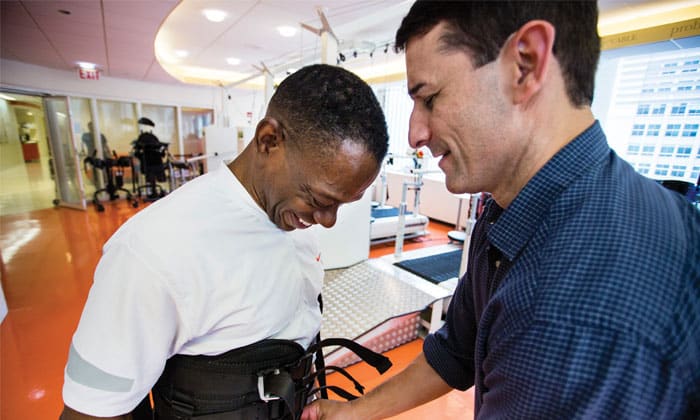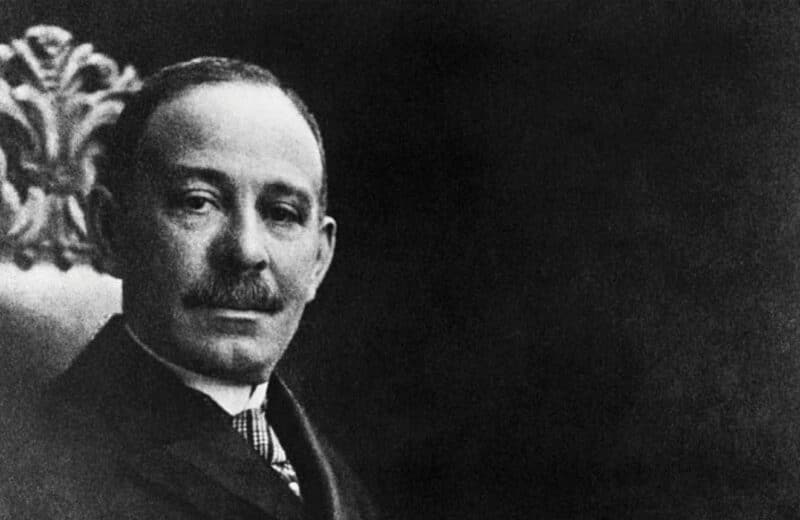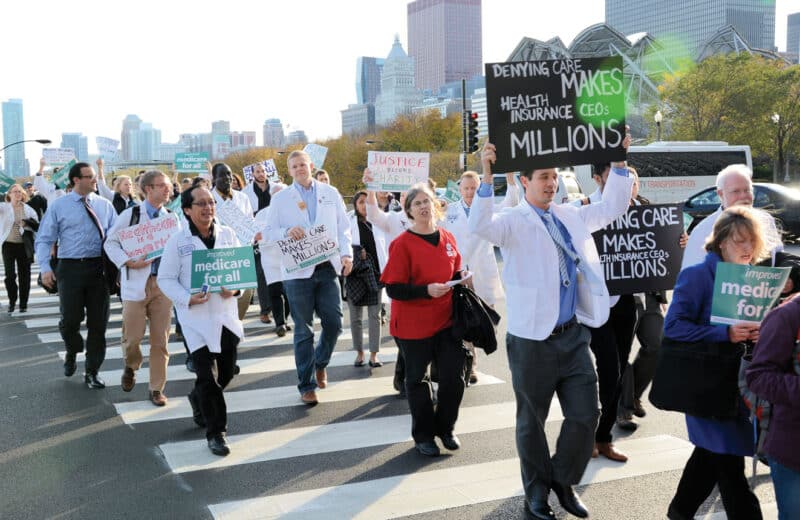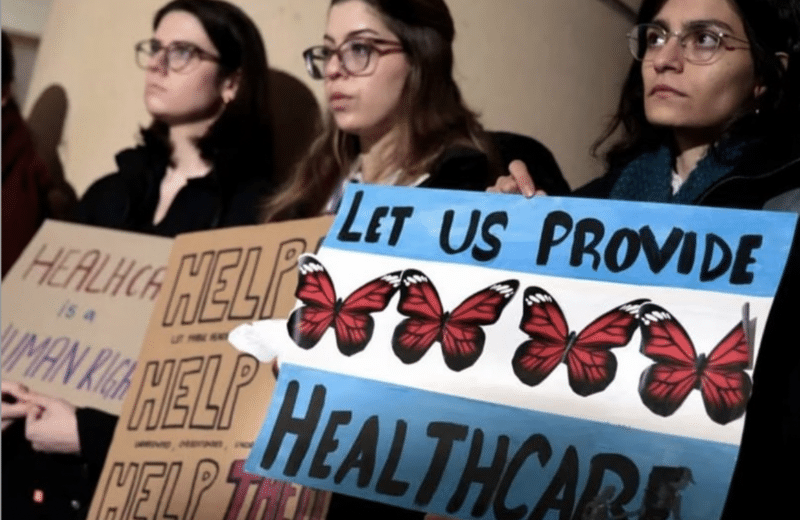High-intensity therapy helps patients rebound
Stroke is a silent killer, striking with little warning. The fifth leading cause of death in the United States, stroke occurs when the blood flow to an area of the brain is cut off. Brain cells are then deprived of oxygen and begin to die.
Today, there are more than 795,000 stroke victims and almost 130,000 stroke-related deaths each year, according to the Centers for Disease Control and Prevention. Nearly 7 million Americans have survived a stroke. New research and better treatment protocols have pushed stroke fatalities down.
To learn about new treatments, Chicago Health visited three institutions at the forefront of stroke rehabilitation: Rehabilitation Institute of Chicago (RIC), University of Chicago Medicine and Northwestern University’s Aphasia and Neurolinguistics Research Laboratory in the Center for the Neurobiology of Language Recovery.
One of the main takeaways was that newer treatments—whether physical exercises, drugs or language recovery—share a common characteristic: high-intensity therapy. Practice makes a difference.
We also know that ‘use it or lose it’ is absolutely true. Your brain, throughout your lifespan, is constantly changing.”
By subjecting patients to higher levelsof physical activity and language therapy,researchers are overturning long-standingideas about patients’ functional recovery. Where doctors once thought patients could not recover functional ability after one year poststroke, the new horizon extends up to 10 years or more.
Increasing Intensity
George Hornby, PhD, PT, director of RIC’s Locomotor Recovery Laboratory, is trying to change the thinking on stroke patients’ mobility. Standard practice has stroke patients practice sitting, balancing and standing activities before they progress to walking. They then walk about 250 to 500 steps per session. Hornby has dramatically increased that in rehab.
Since 2012, Hornby has employed a high-intensity regimen that focuses only on walking, with patients taking 2,000 to 6,000 steps in an hour. His research, using a sample of 200 patients, shows that the number of steps is related to the amount of patient improvement.
“When children are learning piano, there is no better predictor of how well they will perform than the amount of practice,” Hornby says. “So we put that finding to use with patients with stroke. We focus on one task that’s really important—which is to walk—and just bypass all the other stuff.” Those extra steps improve patients’ cardiovascular fitness and help them better negotiate obstacles like curbs, inclines and uneven surfaces.
Hornby’s ideas are not the norm. He hopes larger clinical trials will promote wider acceptance for his approach, beyond RIC.
A major focus of functional recovery is the arm, says Richard Harvey, MD, medical director of RIC’s Center for Stroke Rehabilitation. While 80 percent of patients will regain some walking ability, only 20 percent recover arm use. So RIC has implemented high-intensity arm training. Typically, patients perform about 23 repetitions of various functional arm exercises in rehabilitation hospitals, but RIC is attempting to push patients to perform as many as 300 repetitions.
The idea is to emphasize repetition of highly skilled movement to facilitate brain remodeling and functional recovery. Not everyone can do that many repetitions of arm and hand exercises in an hour, but Harvey says, “If they can do that many repetitions, they should, in order to improve outcome.”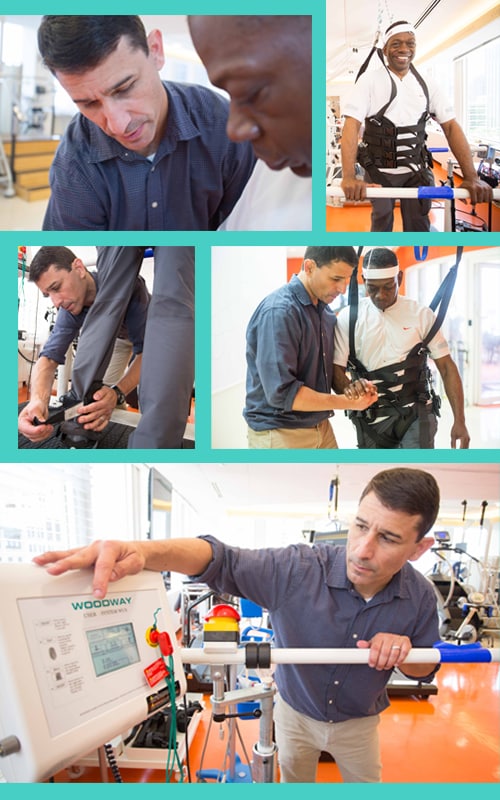
George Hornby, Phd, PT, Director of RIC’s Locomotor Recovery Laboratory, works with a patient.
Photos by James Foster
Language Recovery
At Northwestern University’s Aphasia and Neurolinguistics Research Laboratory, director Cynthia K. Thompson, PhD, provides treatment for stroke patients who have lost their language ability. Her research is “looking at how the brain changes with treatment and what parts of the brain can be recruited for recovery,” she says.
The use of neuroimaging has advanced what is known about aphasia recovery and rehabilitation and the plasticity of the brain. “We have seen patients 10 years poststroke whose brains have reorganized,” Thompson says. “We also know that ‘use it or lose it’ is absolutely true. Your brain, throughout your lifespan, is constantly changing.”
Applying this lesson to language retraining, the Aphasia Laboratory at Northwestern is focused on sentence syntax and semantics. Thompson’s team uses a novel approach, based on a principle of complexity. “We train [people by] using linguistically complex sentences and see improvement on simpler sentences. It used to be common practice to train only [by using] simple sentences,” she says. Thompson is excited by new research in repetitive transcranial magnetic stimulation and transcranial direct current stimulation. “If we can find the parts of the brain that are the most likely candidates to be recruited for recovery, then the next step would be to push those parts of the language network of the brain,” she says. This involves administering behavioral exercises while patients are getting cranial stimulation, which has been shown to promote better recovery as the neurons reroute and develop new pathways.
Clearing the Brain
At the University of Chicago Medicine, a team led by Issam Awad, MD, has reported successful results on the use of a clot-busting drug to clear blood from the brain’s ventricles and reduce mortality.
Strokes come in two forms. Ischemic strokes, which account for more than 85 percent of stroke attacks, involve a blockage of blood flow by a clot. High blood pressure, diabetes and high cholesterol are the main triggers.
In hemorrhagic strokes—the deadliest form—a blood vessel bursts, causing bleeding in or around the brain. Nearly half of all bleeding strokes involve some degree of intraventricular hemorrhage (IVH). Blood pools in the ventricle are especially catastrophic, with a mortality rate between 60 percent and 80 percent.
Awad’s phase 3 clinical trial tested the benefits of the clot-busting drug alteplase or tPA in improving outcomes for IVH. The trial enrolled 500 patients from 73 clinical sites around the world.
Application of tPA directly into the ventricle, combined with a drainage catheter, reduced overall death rates by 10 percent. Researchers found that the most important factor in improving functional recovery was the volume of blood removed. Patients who had less than 20 milliliters of blood in the ventricles had no discernible benefits.
Awad’s team then tested more intense treatment for patients with clots greater than 20 milliliters. Patients received more doses of tPA and had multiple drainage catheters inserted. The result: higher clot removal, reduced disability and an improvement of nearly 20 percent.
Awad is encouraged by the outcome for patients with high-volume IVH strokes. “We now have clear data on how best to implement the procedure and, for at least a group of patients, we know it can nearly double the likelihood of a favorable outcome.”
Such treatments are extending the horizon for stroke patients, significantly increasing functional recovery. With high-intensity approaches in treatment and physical and language recovery, stroke patients can now look forward to a more successful future.

